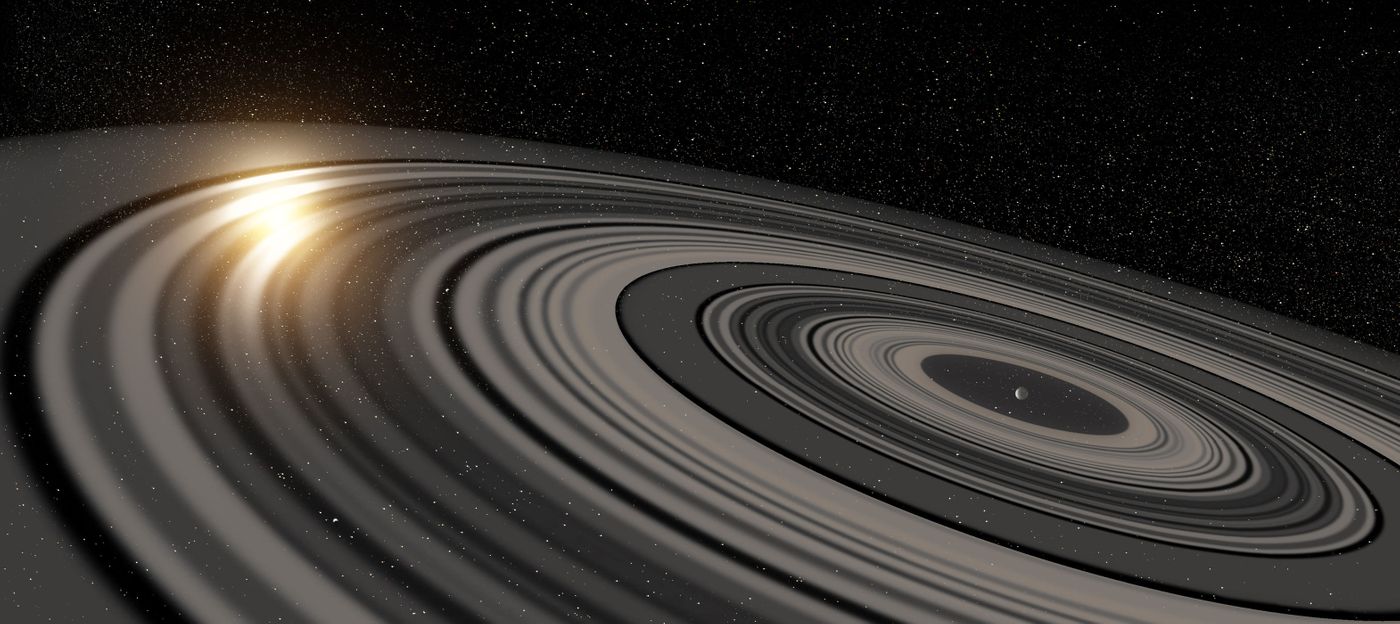Strange Saturn-like Exoplanet Has Reverse-Spinning Rings
A Saturn-like exoplanet in another system is currently making astronomers based out of both Japan and the Netherlands scratch their heads. Something’s going on with it that doesn’t really seem to make a whole lot of sense based on what we understand about our own solar system.

Image Credit: Ron Miller
Like Saturn, the exoplanet has a set of large rings that orbit the planet, but they’re much bigger than Saturn’s are. Rings are typically composed of dust and debris, and it’s probably no different in this alien system situation.
Nevertheless, rings of a planet usually orbit in the same direction that their host planet rotates. This is the case with all of the planets in our solar system, as well as with others that have been found in systems besides ours.
In the case of this particular exoplanet however, which orbits the star J1407, the rings are strangely orbiting the planet in reverse; that’s to say they’re orbiting the planet in the opposite direction the planet itself is spinning.
Realistically, this makes no sense on paper. However, researchers think they might know what caused it, and it must have been a pretty major event to cause something on such a large scale such as this to happen and remain stable all this time.
The findings appear in a paper online, which has been approved for the journal Astronomy and Astrophysics.
The exoplanet follows a very elliptical orbit around its host star, and at some points, the exoplanet gets so close to its host star that it’s amazing the gravity from the star hasn’t ripped the rings apart yet. This gravitational tug might be imposing enough force on the exoplanet such that the rings are pulled in the opposite direction.
In any normal situation where rings would have been orbiting in the same direction as the planet, this gravitational pulling would destabilize the rings and cause them to break apart or chaotically dissipate. On the other hand, thanks to the opposite rotation effects in this particular case, things are actually looking pretty stable for this Saturn-like exoplanet.
One orbit around its host star takes 11 Earth years. Astronomers estimate that the rings should remain stable for at least another 10,000 years at their current rate.
“The system is only stable when the rings rotate opposite to how the planet orbits the star,” lead author Steven Rieder said in a statement. “It might be far-fetched: massive rings that rotate in opposite direction, but we now have calculated that a 'normal' ring system cannot survive.”
While it’s certainly a very rare event and we can speculate all we want, only additional scientific research into what’s actually going on here can provide true insight.
Source: Space.com








